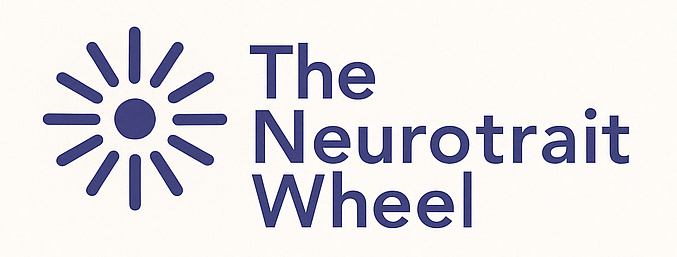Frequently Asked Questions
Why is this model different from others?
Most models of neurodivergence focus on diagnosis, categories, or checklists. They tend to group people by condition, which can be helpful, but doesn’t always reflect the day-to-day reality of neurodivergent life.
The Neurotrait Wheel is different. It:
- Focuses on individual traits, not labels
- Shows how traits vary from person to person even within the same diagnosis
- Helps people reflect and communicate their experience clearly and visually
- Reflects changes over time, and the impact of coping mechanisms
It’s not about being “more” or “less” neurodivergent, it’s about showing your unique shape, and helping others understand it.
Why do you use the word “trait”?
Words like “symptom”, “problem”, or “difficulty” can feel clinical, negative, or one-sided. On the other hand, words like “strength” or “quirk” can feel overly positive or vague.
We use the word trait because it’s neutral.
A trait is just something that shows up in your daily life. It might be helpful, difficult, invisible, or central to who you are. And how it affects you depends a lot on your job, your home life and other outside factors.
Using “trait” allows us to explore these patterns without judgement and without turning people into diagnoses or checklists.
Why aren’t conditions like OCD, Parkinson’s or bipolar included?
Those conditions matter, and some people with them identify as neurodivergent. But for this first version of the Neurotrait Wheel, we’re focusing on traits most commonly linked to developmental and learning-based neurodivergence.
This keeps the tool focused and practical, especially for helping people understand autism, ADHD, dyslexia, dyspraxia, Tourette’s, and similar profiles.
In the future, we might explore additional layers or versions of the Wheel that reflect wider experiences, especially if the community wants that.
Why did you make this?
Because I needed it, and I thought others might too.
There’s a growing awareness of neurodiversity, but people still struggle to explain their experiences, and others still struggle to understand them. I wanted to create something:
- Visual and easy to use
- Rooted in lived experience
- Reflective of the messy reality of overlapping conditions
- Focused on individuality, not diagnosis
- That could help people advocate for themselves or others at work, at home, or anywhere
The Neurotrait Wheel isn’t perfect or scientific, but it’s practical. It’s a way to be seen, to reflect, and to connect.
